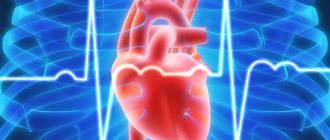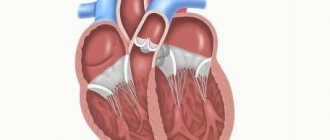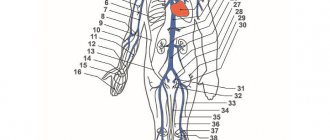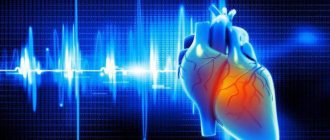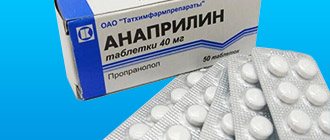Today, a huge number of people suffer from cardiovascular diseases. The correctness of the diagnosis and, accordingly, the treatment, which will help get rid of the unpleasant pathology, depends on how well the diagnosis is carried out. It is worth noting that pathologies of the CVS (stands for cardiovascular system) are now acquiring global proportions. Poor environment, fast pace of life, poor quality nutrition - all this negatively affects the functioning of the heart.
This is why cardiovascular research plays such a significant role today. It is worth considering the main methods of diagnostic measures that are used both in our country and abroad. Thanks to such studies, it is possible to establish the exact cause causing the unpleasant pathology. Having understood the factors that affect the functioning of the most important human organ, you can prescribe complex therapy or perform surgery in a timely manner.
Instrumental methods for studying the cardiovascular system
If we talk about the most accurate methods of diagnosing diseases of the heart and blood vessels, then it is worth highlighting these measures, which have been used in medicine for quite a long time. In this case, we are talking about an in-depth examination of patients with full familiarization with the symptoms of the pathology, as well as the use of special instrumental methods. Such procedures have repeatedly proven their effectiveness. This type of examination is one of the objective methods of studying the cardiovascular system.
In world practice, instrumental examination is necessary in the process of studying the mechanical as well as electrical activity of the heart. Thanks to this, it is possible to clarify the peculiarities of the functioning of the vascular system, as well as any other vital organs of the human body.
If we talk about the advantages of instrumental methods for studying the cardiovascular system, it is worth noting that today more modern methods of conducting them have appeared. For example, the ECG procedure, which stands for electrocardiogram, and other types of cardiography. It is worth paying attention to the popularity of electrocardiography and many other procedures that significantly reduce the time to determine a specific ailment. Thanks to modern computer technologies, it is possible to obtain a more accurate picture of what is happening inside the human body. Therefore, it is no longer so important to carry out operations for diagnosis.
In addition, modern research methods can significantly increase the range of pathologies that a person may encounter. Thanks to modern equipment, it is possible to obtain the most accurate knowledge and determine with greater guarantee in which organ or neighboring tissues a particular pathology develops. It is also worth noting that today, in instrumental studies of the cardiovascular system, measurement technology, mathematics, physics, electronics and many others are actively used.
Diseases of the heart and blood vessels
Cardiology
- a field of medicine that studies the vital system of the human body - the cardiovascular system: the structural features and functions of the heart and blood vessels, the causes and mechanisms of pathology; develops and improves methods for diagnosing, preventing and treating cardiovascular diseases. Considerable attention in cardiology is paid to the rehabilitation of patients with cardiovascular pathology. Unfortunately, heart and vascular diseases have an increasing tendency to affect young people and represent one of the most important problems of modern health care.
Practical cardiology is developing in two directions: therapeutic cardiology and cardiac surgery. Therapeutic cardiology uses conservative methods (medicines, sanatorium treatment) for the treatment of cardiovascular diseases: bradycardia, tachycardia, arrhythmia, extrasystole, vegetative-vascular dystonia, vascular atherosclerosis, arterial hypertension, angina pectoris, myocardial infarction, coronary heart disease, heart failure, myocarditis, pericarditis, endocarditis.
Surgical cardiology surgically eliminates congenital and acquired heart defects and other lesions of the heart and blood vessels, and performs prosthetics of heart valves and vessels.
Cardiovascular diseases are currently considered the most common cause of disability and early mortality in economically prosperous Western countries. According to statistics, the mortality rate due to cardiovascular diseases is 40-60% annually of the total number of deaths.
The main symptoms that allow one to suspect the development of cardiovascular diseases are pain arising behind the sternum and radiating to the left shoulder or scapula, shortness of breath, persistently elevated blood pressure (BP over 140/90 mm Hg), tachycardia (heart rate more than 100 beats per minute) or bradycardia (pulse less than 50 beats per minute), interruptions in heart rhythm, edema. When the first signs of heart and vascular diseases appear, in order to avoid the development of persistent disorders and complications, you must immediately contact a cardiologist. In the initial period of disease development, restoration of functions is achieved more easily and with smaller doses of drugs.
Currently, cardiology has reached a new level in terms of being equipped with the most modern equipment for quick and early diagnosis and timely treatment of cardiovascular pathology. The main diagnostic methods in cardiology are: phonocardiography, electrocardiography (ECG), echocardiography (ultrasound of the heart), daily ECG monitoring. They allow you to assess the contractile function and condition of the heart muscle, cavities, valves and blood vessels of the heart. Over the past few decades, new methods for examining patients with cardiac pathology have been actively developed: probing of the heart cavities and angiocardiography, which allow diagnosing and planning operations on the heart and coronary vessels.
Modern technologies and methods of treating cardiac pathology make it possible to cope with heart diseases that were considered incurable just yesterday. With the help of heart transplantation, cardiology today saves the lives of many desperate patients.
The main directions in the complex of preventive measures to prevent heart disease are optimal physical activity, giving up bad habits, eliminating nervous overload and stress, healthy eating and proper rest.
The Medical Directory of Diseases will allow you to find answers to questions about the prevention of cardiovascular diseases, maintaining and restoring your own health. The catalog of medical institutions on the Beauty and Medicine website will provide the necessary information about clinics providing services for the diagnosis and treatment of cardiovascular diseases in Moscow. Further…
Electrocardiogram
It is worth noting that if the doctor does not conduct an electrocardiogram, then in this case there is no need to talk about obtaining an accurate diagnosis. It is worth noting that today there is practically no adult who has not undergone an ECG procedure at least once in his life (that’s what an electrocardiogram is called for short). Therefore, it is not surprising that many doctors consider this method of studying the cardiovascular system to be the main one. If we talk about its essence, it is quite simple. Several multi-colored sensors are installed on the patient’s body, or rather on his chest and limbs. Thanks to these elements, the cardiograph is able to detect and record any electrical fluctuations occurring in the heart. As a result, the specialist receives a fairly detailed graphic image of all the impulses that emanated from the main human organ. They are presented in the form of a graph on which you can see lines curved to varying degrees.
Of course, for an ordinary person, such research results on diseases of the cardiovascular system provide absolutely no information. However, an experienced cardiologist will be able to read the cardiogram without any difficulty and immediately determine that the heart is working with some deviations from the usual norms or in normal mode.
Accordingly, we can say that thanks to the electrocardiogram, it becomes possible to make a primary diagnosis. An ECG is a very effective measure if there is a suspicion of myocardial ischemia or the presence of necrosis, that is, infarction. These studies help to clarify how much the pathology has spread, as well as to find out other parameters associated with the heart problem. In addition, an ECG allows you to very quickly determine that an arrhythmia or electrolyte disturbance has occurred. Using this study, it is possible to predict upcoming pericarditis, cardiac tamponade and other dangerous conditions. In some situations, this procedure is performed with additional load. This means that the sensors are attached at a time when the patient is not in a calm position, but during running or sports activities.
In order to obtain the most accurate result, it is recommended to conduct the examination not only when the patient is in a horizontal position, but also in 12 different states (running, jumping, etc.). However, more often than not, just a few position changes are enough to get an extremely accurate picture. In particular, experienced doctors often limit themselves to conducting a single examination of the cardiovascular system to make a diagnosis.
METHODS FOR STUDYING CARDIAC ACTIVITY
To study cardiac activity, methods for studying sound phenomena occurring during heart activity ( auscultation of heart sounds, phonocardiography ), methods for studying the contractile function of the myocardium, and methods for recording the electrical activity of the heart are used.
Basic methods for studying myocardial contractile function:
Echocardiography is a method of recording reflected ultrasonic (2 - 5 MHz) waves, which makes it possible to observe the displacement of the walls of the heart during its operation.
Ballistocardiography is the recording of the longitudinal displacement of the human body and its center of gravity during the work of the heart. The patient is placed on a table to which special sensors are attached (can also be attached to the patient’s lower extremities). At the moment of blood ejection from the ventricles into large vessels, the heart shifts in the opposite direction and the center of gravity shifts.
Dynamocardiography – registration of the displacement of the center of gravity of the chest in the longitudinal and transverse directions. The receiving device is located on the platform and projected onto the chest area.
The main methods for studying the electrical activity of the myocardium are electrocardiography (ECG), vectorcardiography and magnetocardiography.
When excited, a negative charge appears on the surface of the cells of the working myocardium. The heart becomes a powerful electric generator. Because body tissues are highly conductive; electrical potentials associated with the processes of propagation of excitation in the heart can be recorded on the surface of the body.
The first electrocardiograph, which made it possible to register a true ECG with all its waves, was created by Einthoven (Nobel Prize 1924).
Rice. 25. ECG.
ECG waves arise and develop when there is a potential difference between parts of the excitable system, i.e. some part of the system is excited, while the other is not. The isopotential line is recorded at those moments of time when there is no potential difference within the excitable system, i.e. the entire system is not excited or, on the contrary, is completely engulfed in excitement.
The P wave reflects excitation (depolarization) of the atrial myocardium. The speed of propagation of excitation along specialized intraatrial bundles is approximately equal to the speed of propagation through the contractile myocardium of the atrium, therefore the wave is monophasic.
Segment PQ - excitation spreads to the atrioventricular (atrioventricular) node and moves along the ventricular conduction system (bundle of His). Both atria are fully excited, both ventricles are not yet excited. The movement of excitation along the conductive system is not detected. This time between depolarization and repolarization of the atria corresponds to the plateau phase of the action potential of atrial cardiomyocytes.
The QRS complex is excitation (depolarization) of the ventricles. It is carried out by transferring excitation from the elements of the conduction system to the contractile myocardium. The Q wave is the excitation of the apex of the heart, the inner surface of the ventricles. The R wave is the excitation of the base of the heart and the outer surface of the ventricles. The S wave is full coverage of the ventricular myocardium by excitation.
ST segment – both ventricles are excited (plateau phase of ventricular cardiomyocytes).
The T wave is the process of repolarization of the ventricular myocardium (restoration of the normal membrane potential of myocardial cells). This process in different cells does not occur synchronously; a potential difference appears between the still depolarized areas of the myocardium and the areas that have restored their positive charge. The T wave is the most variable part of the ECG.
Between the T wave and the subsequent P wave there is an isopotential line (at this time there is no potential difference in the ventricular myocardium and in the atrium myocardium).
On a normal ECG there is no visible display of atrial repolarization, because coincides in time with the QRS complex and is absorbed by it. With transverse heart block, when not every P wave is accompanied by a QRS complex, an atrial Ta wave (T - atrium) is observed, reflecting atrial repolarization.
The QT interval is the total duration of the electrical systole of the heart (the duration of the excitation process in the ventricles during systole). Almost coincides with the duration of mechanical systole - mechanical systole begins somewhat later than electrical systole.
RR interval is the duration of the cardiac cycle.
An ECG allows you to evaluate the nature of excitation in the heart. By the size of the PQ interval (from the beginning of P to the beginning of Q), one can judge the speed of excitation from the atria to the ventricles (normally 0.12 - 0.2 s). The total duration of the QRS complex reflects the speed at which the contractile myocardium of the ventricles is covered by excitation (0.06 - 0.1 s).
An ECG allows detailed analysis of changes in heart rhythm. Normal heart rate is 60–80 beats/minute. Bradycardia – 40-50 beats/minute. Tachycardia – more than 90-100 beats/minute, reaching 150 or more per minute. Bradycardia is often recorded in athletes at rest, and tachycardia - during intense muscular work and emotional arousal. Respiratory arrhythmia is a change in the heart rate due to breathing (observed in young people). At the end of each exhalation, the heart rate decreases.
In some pathological conditions, the correct rhythm can be occasionally or regularly disrupted by an extraordinary contraction - an extrasystole.
Extrasystoles can appear in the presence of foci of irritation in the myocardium itself, in the area of the atrial or ventricular pacemaker. Extrasystoles can be facilitated by influences coming from the central nervous system.
Sinus extrasystole - extraordinary excitation occurs in the sinoatrial node at the moment when the refractory period has ended, but the next automatic impulse (corresponding to the normal rhythm) should not yet appear. The pause following such an extrasystole lasts the same time as a normal one.
Ventricular extrasystole - extraordinary excitation occurs in the ventricular myocardium. It does not affect the automation of the sinoatrial node. The sinoatrial node promptly sends the next impulse, which reaches the ventricles at a time when they are still in a refractory state after the extrasystole. At the end of the refractory period, the ventricles can again respond to stimulation, but some time passes before the next impulse arrives from the sinoatrial node. Those. ventricular extrasystole leads to a compensatory pause of the ventricles with a constant atrial rhythm.
Under various influences (hypoxia, blockage of the coronary artery, excessive stretching and cooling, drug overdose, electrical trauma), extremely frequent and asynchronous contractions of muscle fibers can occur in the parts of the heart: flutter (up to 400 Hz) and fibrillation or flicker (up to 600 Hz). The main symptom of these pathological phenomena is the non-simultaneous contraction of individual muscle fibers of a given part of the heart; closed waves of excitation circulate in the myocardium.
With atrial flutter, instead of the P wave, flutter waves are recorded on the ECG, having a sawtooth configuration. This condition is accompanied by incomplete atrioventricular block. The ventricular conduction system, which has a long refractory period, does not allow such frequent impulses to pass through. Therefore, the QRS complex appears on the ECG at regular intervals.
With atrial fibrillation, the activity of these parts of the heart is recorded in the form of high-frequency irregular oscillations, the intervals between QRS complexes are different (arrhythmia). However, the QRS complex configuration is not changed. As a rule, hemodynamics with atrial fibrillation suffer slightly.
Ventricular flutter and fibrillation are fraught with more serious consequences, because filling and ejection of blood from the ventricles are affected. This leads to cessation of blood circulation and loss of consciousness. If blood flow is not restored within a few minutes, death occurs (brain activity is restored no later than 8–10 minutes after the heart stops working).
With ventricular flutter, high-frequency large waves are recorded on the ECG, and with fibrillation, oscillations of various shapes and frequencies are recorded.
A single suprathreshold electrical stimulus can cause flutter or ventricular fibrillation if it falls during the so-called vulnerable period - during the repolarization phase (approximately coincides with the ascending limb of the T wave on the ECG). During this period, some cells are still in a state of absolute refractoriness, others in a state of relative refractoriness. Extrasystoles that occur during a vulnerable period can, like an electrical discharge, lead to ventricular fibrillation.
Electrical defibrillation of the ventricles is carried out using a short single current pulse of several amperes (the voltage in the pulse is several kilovolts). This current simultaneously excites many areas of the myocardium that are not in a state of refractoriness. As a result, the circulating wave of excitation finds these areas in the refractory phase and its further conduction is blocked. After this, the synchrony of contractions is restored. For defibrillation to be effective, it is necessary to prevent organ damage caused by circulatory arrest. To do this, closed heart massage and artificial respiration are performed.
Electrical axis of the heart.
The electrical axis of the heart is a vector that reflects the average magnitude and direction of the electromotive force (emf) acting during the electrical systole of the heart. Indicates in which direction the maximum emf is applied. for the longest time.
Standard Einthoven leads are placed on the limbs in such a way that an approximately equilateral triangle is formed, with the heart at the center. Algebraic sum of all emfs. in a closed circuit is equal to 0 (Kirchhoff's law). The amount of e.m.f. The 1st and 3rd leads directed to the left leg (LN) are equal to the e.m.f. II lead, also directed to the FN. About the magnitude of the e.m.f. can be judged by the proportional height of the teeth (R wave) in the corresponding lead.
| Rice. 26. Electrical axis of the heart. Standard leads: I - e.m.f. directed from PR (- pole) to LR (+ pole); III - e.m.f. directed from LR (- pole) to LM (+ pole); II – e.m.f. directed from PR (- pole) to LN (+ pole). E.M.F. ratio leads: I + III = II PR – right hand; LR – left hand; LN – left leg. |
Normally, the direction of the electrical axis of the heart ranges from 0 to 90°. If the direction of the axis is in the range from 0 to -90°, we speak of axis deviation to the left, which, as a rule, indicates a displacement of the anatomical axis of the heart to the left (often happens in obese people). Deviation to the right is the direction of the axis in the range from +90° to +180°, more suspicious in the sense of heart pathology.
Vectorcardiography (VCG) is the recording of changes in the plane of the position of the electrical axis of the heart during the cardiac cycle. Loops are observed on the oscilloscope screen - p, QRS, T, reflecting the path of the excitation wave. Comparison of VCG recorded in three or more mutually non-parallel planes makes it possible to present the dynamics of the total vectors of the atria and ventricles of the heart over time in three-dimensional space. The VCG is analyzed according to the maximum length and width of the loops, their shape, and the angles of deviation of the maximum vectors from the coordinate axes of the recording plane. They change significantly and in a certain way with hypertrophy of the atria and ventricles, heart block, rhythm disturbances and myocardial infarction. VKG is used to clarify diagnostics and in scientific research.
Magnetocardiography (MCG) is a non-contact method of recording the magnetic component of the electromagnetic field of the heart. The sensor (most often a toroidal coil with a large number of turns) is placed as close to the chest as possible. The maximum amplitude of the main waves is recorded when recording from the epigastric region. For successful registration of MCG, the following are required: isolation from the earth’s magnetic field, absence of metal objects on the patient’s body. MCG resembles ECG; when describing it, the designations adopted for ECG are used. MCG makes it possible to more clearly record magnetic signals from nearby areas of the heart, and the pathological dynamics of bioelectric processes in these zones is reflected more fully on MCG than on ECG. Due to the complexity of the technical registration conditions, ICG is used mainly in scientific research.
Previous16Next
EFI
This procedure stands for electrophysiological studies. Similar events appeared in the early 60s. In those days, there were quite advanced methods that could be used everywhere to diagnose cardiovascular diseases. The procedure itself involves the use of special catheter electrodes and additional registration-type sensors. All this equipment makes it possible to study the condition of the inner cardiac surface.
Thanks to this method of studying the cardiovascular system and the data obtained, the doctor can determine a specific disease with fairly high accuracy and select the most effective therapeutic measures. Sometimes, thanks to electrophysiological studies, it is possible to prevent dangerous conditions in a timely manner and perform the necessary operation on time. This method also allows you to predict the possibility of arrhythmia and other disorders in the functioning of the cardiovascular system. This is a very important aspect when making a diagnosis.
general information
If there is reason to believe that a person’s heart is unhealthy or there are problems with the vascular system, a comprehensive diagnosis of cardiovascular diseases is necessary. This measure will help prevent a sudden stroke, heart attack or aneurysm, identify a diagnosis in time and recommend a treatment program to the patient. Even if a person refuses a therapeutic course, he will be aware of the dangers that threaten him and how the situation can be changed.
It is necessary to undergo all diagnostic measures recommended by the doctor if the listed pathologies have already been experienced, if you are concerned about high blood pressure. Diagnostics is needed to determine and select therapy for insufficient heart function, disturbances in cardiac rhythm, conduction, and contractility. In recent years, angina pectoris, diseases of the veins and arteries of the extremities have been increasingly detected. To identify them in time, it is necessary to resort to effective diagnostic approaches.
Echocardiogram
This functional method for studying the cardiovascular system is considered one of the most accurate. EchoCG (this is how this name is abbreviated) is performed using ultrasound in the electrocardiogram format. In this case, the procedure (for the patient) is practically no different from an ECG. To carry it out, the patient must lie in a horizontal position, after which the doctor places a special sensor on his chest. After turning it on, very clear images of the heart and its vessels will be visible on the monitor of the device. Thanks to the resulting picture, the doctor will be able to assess the patient’s condition, as well as how well the heart muscle works.
Thanks to this research method, in diseases of the cardiovascular system, it is possible to determine certain pathologies with greater accuracy. It is worth noting that echocardiogram is successfully used today in Europe and is considered one of the most progressive for working with patients suffering from cardiovascular problems.
Ultrasound diagnostics today is used in almost every cardiology clinic or specialized center in all major cities. If we talk about another decoding or abbreviation of this event, then probably everyone will be better familiar with such an abbreviation as ultrasound. In fact, this is an echocardiogram, which, as a rule, takes no more than 20 minutes. Before the procedure, you must follow all the doctor’s recommendations. If, for example, you eat or drink too much water immediately before an ultrasound, you may get an inaccurate result.
Advantages of ON CLINIC
The international medical center ON CLINIC has its own modern laboratory certified under the quality control program. Realizing how important laboratory tests are in diagnosing diseases of the cardiovascular system, we constantly update the technical base of the laboratory, closely monitor new laboratory diagnostic techniques and implement them.
Patient safety is the basis of the activities of the ON CLINIC laboratory. It is strictly observed at all stages of laboratory examination.
In our laboratory, an express blood test is possible, the results of which you will receive in the shortest possible time in your hands or by e-mail.
A convenient service from our laboratory is the sample collection service at home and in the office.
ON CLINIC employs cardiologists of the highest qualifications who are always ready to help you. By contacting them, you can be sure that you will be given an absolutely accurate diagnosis and effective treatment will be recommended.
24-hour Holter monitoring
According to medical practice, a heart attack can happen at almost any moment, and it does not matter what time of year or day it is. Of course, monitoring a patient’s condition around the clock is simply physically impossible for any doctor. However, in order to determine the presence of a particular pathology, it is necessary to pay attention to any disruptions that occur during the functioning of the heart. In order to determine the presence of such dangerous cardiac interruptions, it is necessary to perform daily monitoring. This technique for studying the cardiovascular system is widely used today.
In this case, we can say that a so-called permanent ECG is used, which is performed over 24 hours. As a rule, to do this, it is necessary to attach a compact cardiograph to the patient’s body, which will be with him throughout the day and night. A small device will record all the readings transmitted by the human body.
However, in addition to this, certain actions are required on the part of the patient himself. Throughout the day, he must record any of his actions with extreme precision, recording the exact time of any movement in a special diary. After the unit is removed, the doctor will compare the data from the recordings and ECG indicators. This will help him determine exactly what actions or conditions of a person could provoke increased activity of the heart or any problems with it. This allows you to very quickly identify pathological deformities.
This functional method for studying the cardiovascular system is considered one of the most modern, which is why it has been used for a long time in Europe, America and many other countries. Moreover, most doctors come to the conclusion that it is time to include such studies as mandatory. Especially when it comes to people who already suffer from heart rhythm disturbances, as well as those who have been diagnosed with so-called fainting conditions.
24-hour blood pressure monitoring
Doctors often use this diagnostic method, which is abbreviated as ABPM. This method of studying the human cardiovascular system is very similar to the previous one, but still differs from it.
The essence of the procedure is that automatic measurements are taken using a special device, which are also carried out over a 24-hour period. In this case, a device is used, which, in the same way as in the case described earlier, must be fixed on the patient’s body. It is worth noting that the study of the cardiovascular system in children is very often carried out using ABPM.
Thanks to the data obtained, the doctor will be able to assess how the pressure dynamics change depending on a person’s behavior during the day or at night. This allows us to determine who may soon have to deal with hypertension or autonomic dysfunction. An important condition for such a study is also the use of a diary, in which the patient must describe in detail everything that happens to him during the day and night.
Treadmill test
Such a functional study of the cardiovascular system must be performed exclusively at a time when the patient is in a tense state. That is, he performs certain physical activities. For example, a patient can run in place or use a treadmill while wearing special sensors that help obtain data about the work of the heart.
It is noteworthy that thanks to such tests it is possible to obtain data not only on the cardiovascular system, but also on all other organs of the patient. The doctor evaluates how much each system is loaded during physical activity. It is also worth noting that during the test it is recommended to perform several exercises at once. For example, a patient may first run on a treadmill and then spend some time on an exercise bike.
Indications
Laboratory tests may be recommended, in particular, if:
- coronary heart disease;
- myocardial infarction;
- pain in the heart and manifestations of angina pectoris;
- sluggish heart failure;
- conduction disorders of the heart and blood vessels.
This is not a complete list of diagnoses and conditions when certain laboratory tests may be prescribed. At the same time, it must be remembered that only a qualified cardiologist can recommend a list of examinations in each specific case. This will allow, on the one hand, to make an accurate diagnosis, and on the other, to avoid unnecessary expenses.
If you need to undergo laboratory tests for cardiovascular diseases or require highly qualified assistance from a cardiologist, be sure to make an appointment at ON CLINIC. Our specialists work every day, including weekends and holidays.
Trust your health to professionals! ON CLINIC
Coronary angiography
Experts often call this method of studying the functional state of the cardiovascular system the gold standard. This is not surprising, because with the help of coronography it is possible to determine with the greatest accuracy the condition of the coronary arteries.
During diagnostic procedures, the doctor determines whether atherosclerotic narrowings are present. If the patient really suffers from this pathology, then thanks to the study it is possible to determine not only the extent of the narrowing, but also other serious indicators. This is important when conducting diagnostics.
Thanks to this clinical examination of the cardiovascular system, the specialist has the opportunity to assess the state of the heart and blood vessels and formulate the best treatment, which will be optimized in accordance with the patient’s specific indicators. However, it should be noted that coronography is not prescribed for everyone.
As a rule, such a procedure is performed only if the doctor is at a crossroads and with a 50% probability would recommend surgery. To eliminate the need for such an event, an additional examination of the cardiovascular system in the form of coronography is mandatory.
It is also worth noting that this technique can be used both planned and in emergency situations. For example, if a patient unexpectedly has a myocardial infarction. The reluctance to use such a diagnostic measure in all cases is explained by the fact that coronography is a rather serious, minimally invasive, but still surgical intervention. This is why the procedure is not so widely practiced.
If we talk about how this study of the human cardiovascular system is carried out, it is worth explaining that for it the patient needs to make a puncture in the vessel of the thigh or in the area of the radial artery. Through the resulting hole, a microscopic catheter must be inserted into the bloodstream. Walking over the human body, it takes the necessary pictures. Thanks to which the doctor is able to analyze the state of the body in real time.
Dopplerography
Many experts note that this method of studying the cardiovascular system is very effective and helps to determine the specific conditions of the patient.
This diagnostic event is one of the types of ultrasound examination of the body. Thanks to this technique, the specialist identifies possible disorders associated with blood flow and vascular function.
The examination process uses the features of ultrasound, which is reflected from moving objects. Thanks to this, the readings can change their frequency in proportion to the speed of movement of a particular object. If we talk about this study of the cardiovascular system in more detail, then in this case the specialist must determine the peculiarity of the movement of red blood cells (it is from them that ultrasonic waves are reflected), as well as the speed of blood flow. Thanks to this study, the doctor can get a clear picture of the condition of the blood vessels.
Among other things, using Doppler sonography, the condition of the vascular system is diagnosed not only of the heart, but also of the spine, neck, head, arms, legs and much more. For the procedure, you must use an ultrasound machine, which is equipped with a special sensor. This compact device is capable of sending waves through a person’s skin, penetrating into the tissues of his body. The data obtained clearly shows how blood moves. If we compare them with the indicators from a previously performed standard ultrasound, then in this case it is possible to obtain an image in which you can clearly see any disturbances in blood flow or the absence thereof.
If a specialist sees that a blockage has occurred, then in this case he has the opportunity to clarify its dimensions and other important nuances. It is noteworthy that this procedure does not cause absolutely any discomfort. It is completely painless and safe. Moreover, the study takes no more than half an hour, so such diagnostics today are widely used not only for adults, but also for children.
Aortography
Before exploring additional methods for studying the cardiovascular system, we will introduce the reader to the last basic one. This event can also be called a fairly effective and modern method of diagnosis, which is used today. In this case, we are talking about an X-ray examination of the aorta. Thanks to this method, the doctor has the opportunity to obtain information about the complex condition of the aorta. This becomes possible only after a special contrast agent is injected into it. This product contains radioactive radiation, but do not be alarmed. Its amount is so tiny that it is simply not capable of causing harm to the human body. In any case, this is necessary in order to get a high-contrast photo.
The resulting images clearly show the state of the heart vessels. Such a study is usually performed provided that tumors or any other abnormalities have already been detected in the heart organ. It is also worth noting that very often conventional radiography is used for standard diagnostic measures. Thanks to an accurate image, you can notice darkening, which indicates problems in certain areas of the heart or its vessels.
Now it is worth briefly considering additional methods for studying the cardiovascular system. They are also important. After all, only with an integrated approach can we talk about the correctness of the diagnosis.
Laboratory methods for studying the cardiovascular system
These diagnostic measures are an integral part of working with patients who complain of poor condition. Thanks to these studies, it is possible to identify hundreds of pathologies that cannot be determined based on an ECG alone. In addition, the use of expensive equipment is not always available to a large number of patients. While laboratory tests of the cardiovascular system are carried out mostly free of charge, quite quickly and help the doctor assess the person’s condition.
If we consider clinical cardiology, it is worth noting that today such diagnostics can be divided into two types. First of all, a general blood test is performed on the patient. His urine is also being studied. However, in most cases, experts prescribe additional studies in the form of:
- Biochemical blood test. This is a more detailed study.
- Biochemical urine analysis.
- Blood tests for its acid-base status.
Also, if necessary, a blood clotting test is performed.
In the first case, we are talking about preliminary diagnosis. However, biochemistry provides the doctor with much more useful data. This certainly plays a role when choosing subsequent treatment tactics.
Blood pressure measurement
This is another procedure that is mandatory if the patient first visited the doctor and complained about possible problems with the cardiovascular system. To do this, the doctor uses a tonometer, which allows you to determine your blood pressure and heart rate. The cuff of the device is placed on the patient's arm. At this moment he should be relaxed and sit straight in his chair. After this, the device begins to squeeze the hand and reads the pulsations that go through the veins.
In this case, we are also talking about preliminary diagnosis. Moreover, such a study of the cardiovascular system can be carried out independently at home.
Pressure: long-term monitoring
Another modern method for diagnosing cardiovascular diseases is checking blood pressure readings in the arterial bed during the day. The event involves analyzing the state of the circulatory system. As a result, the doctor has an accurate idea of the variability of pressure parameters. The dependence of changes on a person’s normal daily activity is revealed. The need for such a study was established by revealing that a one-time check of indicators does not provide a qualitative idea of vascular performance. Objective conclusions and an accurate diagnosis are possible only if the doctor knows how the pressure changes, how much it depends on the time of day, the patient’s activity, and the performance of any actions.
For the entire period of the examination, a special cuff connected to a tonometer is attached to the patient’s arm. The unit automatically activates with half-hour pauses, checks the data and writes the results into memory. The daily totals give 48 pairs of numbers. Such indicators are taken not only while awake, but also when the person under study is sleeping.
